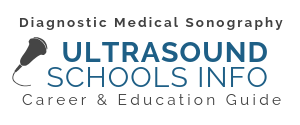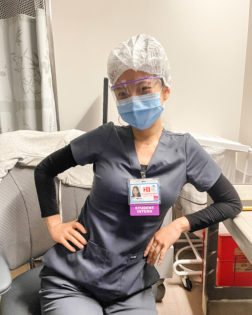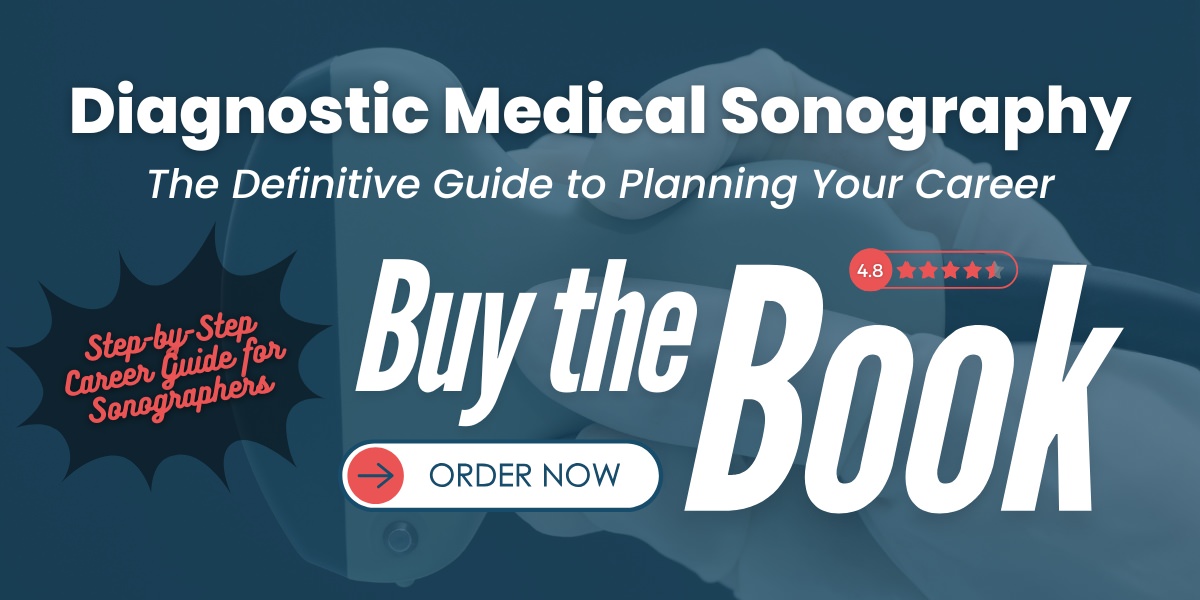
If you enjoy helping people and working in a dynamic, challenging environment, then a career as a diagnostic medical sonographer may be for you.
Medical sonographers are highly specialized and trained allied health professionals. They work in close concert with other healthcare professionals, such as doctors and radiologists.
Sonographers use imaging equipment that emits sound waves, and these waves produce images of the inside of the body. They also help prepare patients for procedures, maintain ultrasound equipment, record patient history and present findings to the medical team.
In our free, comprehensive online guide, our experts will help you learn what a medical sonographer does and how to go about becoming one. The programs are competitive, the coursework is rigorous, and the rewards are many.
How do you Become an Ultrasound Technologist?
- Research the field. If becoming a sonographer is something you would like to pursue, it’s important to first understand what skills are required, and if it’s a good fit for you.
- Meet the prerequisites to apply. Each ultrasound program is different, but there are commonalities that you can prepare for before you begin the application process.
- Find an accredited ultrasound program and choose your degree. If possible, it’s important to choose a program that has been accredited by the CAAHEP. You must have at least an Associate’s degree in medical ultrasound to pursue your career, and there are other options available depending upon your interests and previous levels of education.
- Choose your specialty. From General DMS to Cardiac sonography, there are many options available to you. Learn your options and discover what opportunities await.
- Obtain your RDMS credential. Earning your RDMS credential is a requirement from most employers. If you attend a CAAHEP accredited program, you will automatically qualify to sit for their exam.
Is Sonography the Right Career for You?
First, it’s important to consider if sonography is a good choice for you. It’s necessary to learn the requirements, benefits, and challenges of any potential career path, and sonography is no different. You will want to research the field and carefully consider whether it is the right fit for you before committing to a program of study. You may also want to speak with current sonographers or attend informational sessions at schools offering programs in diagnostic medical sonography to get a better understanding of the career and what it entails. You may also wish to visit our Student Resource Center, where you’ll find articles and interviews from sonography students and professors from across the country.
Prerequisites for Applying to Ultrasound School
Each ultrasound program is different, but most will have prerequisites that include college-level courses such as:
- Human anatomy and physiology
- Math
- General physics
- English composition
- Medical terminology
It is also common for programs to have minimum score requirements in the SAT or TEAS exam. Some will want documented direct patient-care experience, and volunteer hours can help meet this requirement.
Sonography programs are limited in the number of students that can be admitted each year. Accreditation standards require that there be a certain student to faculty ratio, resulting in a competitive admittance process for applicants. Many programs require that you meet not only the course prerequisites listed above, but in some cases they want you to already have your AA degree. Letters of recommendation are also commonplace and something to think about as you complete your coursework.
Apply to an Accredited Ultrasound Program
Admittance to Ultrasound School is often a selective and competitive process. It’s important to choose the right program for you, make sure it’s accredited, and prepare ahead of time to meet the admittance requirements.
There are many accrediting bodies for schools offering degrees in medical imaging. If possible, select one that has program-level accreditation from the Commission on Accreditation of Allied Health Education Programs (CAAHEP). That way, you will be eligible to sit for your credentialing exam offered by the American Registry for Diagnostic Medical Sonography (ARDMS). This credential is typically required by employers.
Find an Accredited DMS Program Near You
How Long Does it Take to Become an Ultrasound Technician?
An Associate of Science Degree (AAS) in diagnostic medical sonography is the minimum education required to become a practicing sonographer, which typically takes 2 years of full-time attendance. Students with an existing degree in a patient-care related field may be able to apply to a shorter-term certificate program. Prerequisites to enter most degree programs include college-level math, science, and English.
Hands on learning, both in the form of internships and clinical externships, are an important part of the sonography training process. When considering which program to attend, find out what types of experiential learning are offered to students.
Understand the Different Degree Options
- Approximately 12-18 months
- Designed for current healthcare professionals or those who have already completed some type of higher education
- Prepares students for entry level sonography positions
- At least 2 years of full-time attendance
- Results in an Associate of Applied Science (AAS) degree with a specialization in diagnostic medical sonography
- Prepares students to become a practicing sonographer
- Choosing a program that is accredited through the Commission on Accreditation of Allied Health Education Programs (CAAHEP) is important to be eligible to take examinations through the ARDMS or Cardiovascular Credentialing International (CCI) organizations
- Approximately 4 years
- Typically results in a Bachelor of Science Degree with a specialization in diagnostic medical sonography
- Prepares students to become a practicing sonographer
- Choosing a program that is accredited through CAAHEP is important to be eligible to take examinations through the ARDMS or CCI organizations
- May provide students with more job opportunities due to the additional length of education and specialty training, allowing them to be eligible for various specialty registry examinations
Whether you choose a two-year or four-year program, it is crucial that you do your research before starting a program. CAAHEP accredited programs have distinguished their quality in educational resources through a rigorous external review process. Learn more about your options by visiting our degree center.
Specialties in Sonography
Which Specialization is the Best Match for you?
The American Registry for Diagnostic Medical Sonography (ARDMS) offers five different credentials in sonography, which correspond to a main exam and different specialty exams. There are also a variety of non-clinical career paths available to working sonographers.
| Credential Earned | Main Exam | Specialty Exam |
|---|---|---|
| RDMS | Sonography, Principles and Instrumentation (SPI) Exam |
|
| RDCS | Sonography, Principles and Instrumentation (SPI) Exam |
|
| RVT | Sonography, Principles and Instrumentation (SPI) Exam |
|
| RMSKS | Sonography, Principles and Instrumentation (SPI) Exam |
|
| Midwife Sonography Certificate | Midwife Sonographer Examination |
|
Earn Your Credential in Ultrasound
Attendance at a college accredited by CAAHEP will prepare you to sit for national certification exams. Certification by the American Registry for Diagnostic Medical Sonography (ARDMS) is required by virtually all employers.
The ARDMS is a leading accrediting organization recognized across the United States and around the world. Many states require an aspiring sonographer to become certified in one of the 5 ultrasound specialties offered through the ARDMS by meeting educational and experiential pre-requisites and writing a certification exam.
Other licensing or certification organizations that offer credentials relevant to ultrasound technology include the ARRT (American Registry for Radiologic Technologists), CCI (Cardiovascular Credentialing International) and JCAHPO (Joint Commission on Allied Health Personnel in Ophthalmology).
In certain states, such as New Hampshire, New Mexico, North Dakota, and Oregon, mandatory licensing laws for ultrasound technologists have either been passed or proposed. In these four states, it will be impossible to become a sonographer without receiving a license or certificate.
In states where ultrasound certification is not legally required, most employers still prefer or require an ultrasound technician to be licensed or credentialed. Generally speaking, those who are certified have a competitive advantage over those who are not when searching for employment.
Keep Exploring! Find Other Articles & Interviews Below.
- Sonography Career Paths
- 7 Female Pioneers in Medical Imaging
- Ultrasound Technician Degree Options
- Find an Ultrasound Technician Program Near You
- How to Pay for Sonography School
- Anatomy & Physiology: A Student’s Perspective
- Time Management Tips for Sonographers
- What to Know About Selecting an Ultrasound School
- Tips on Preparing a Successful Sonography Schools Application
- Expectation vs Reality – What’s it Like to be a Sonographer?
Updated February 16, 2025






